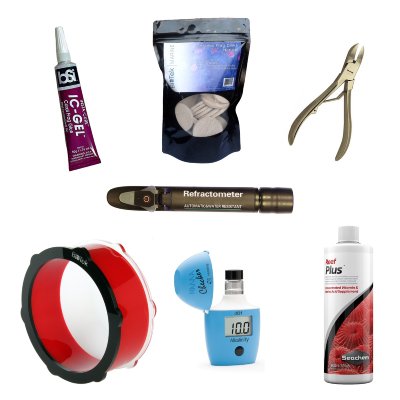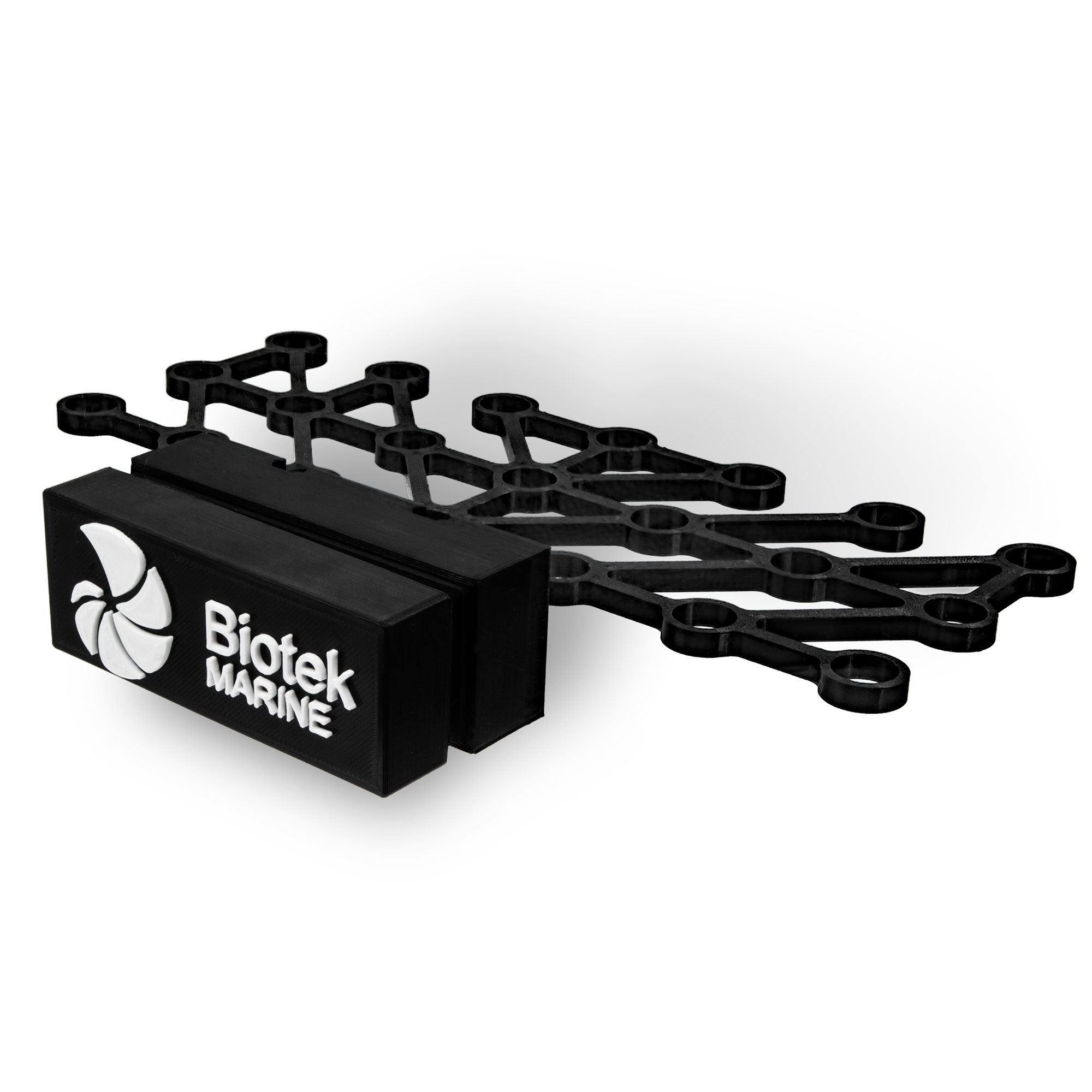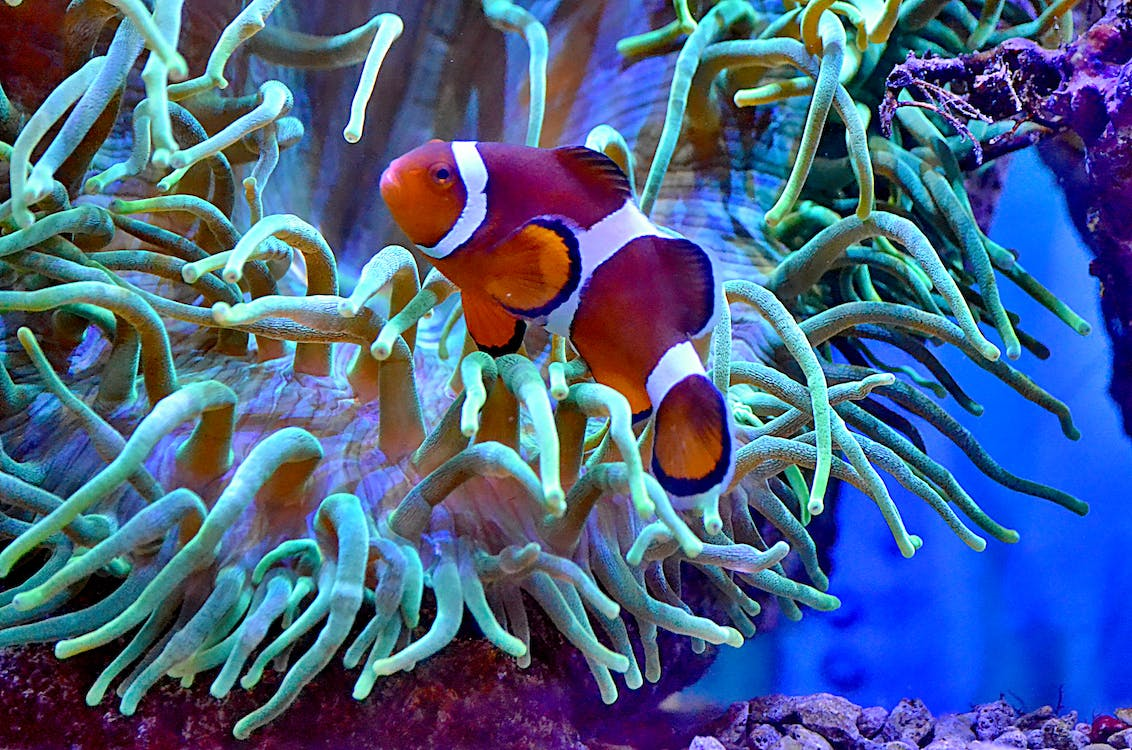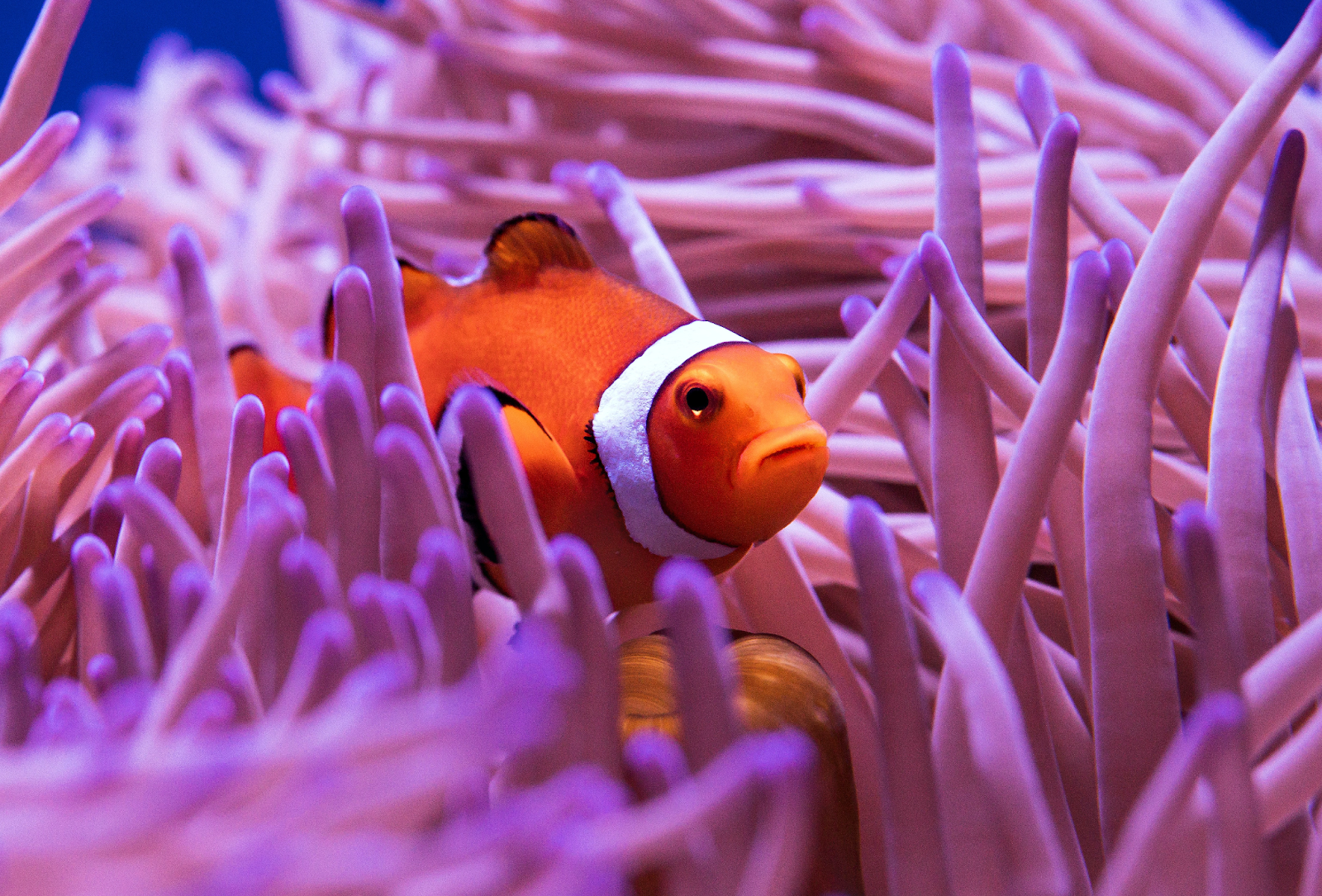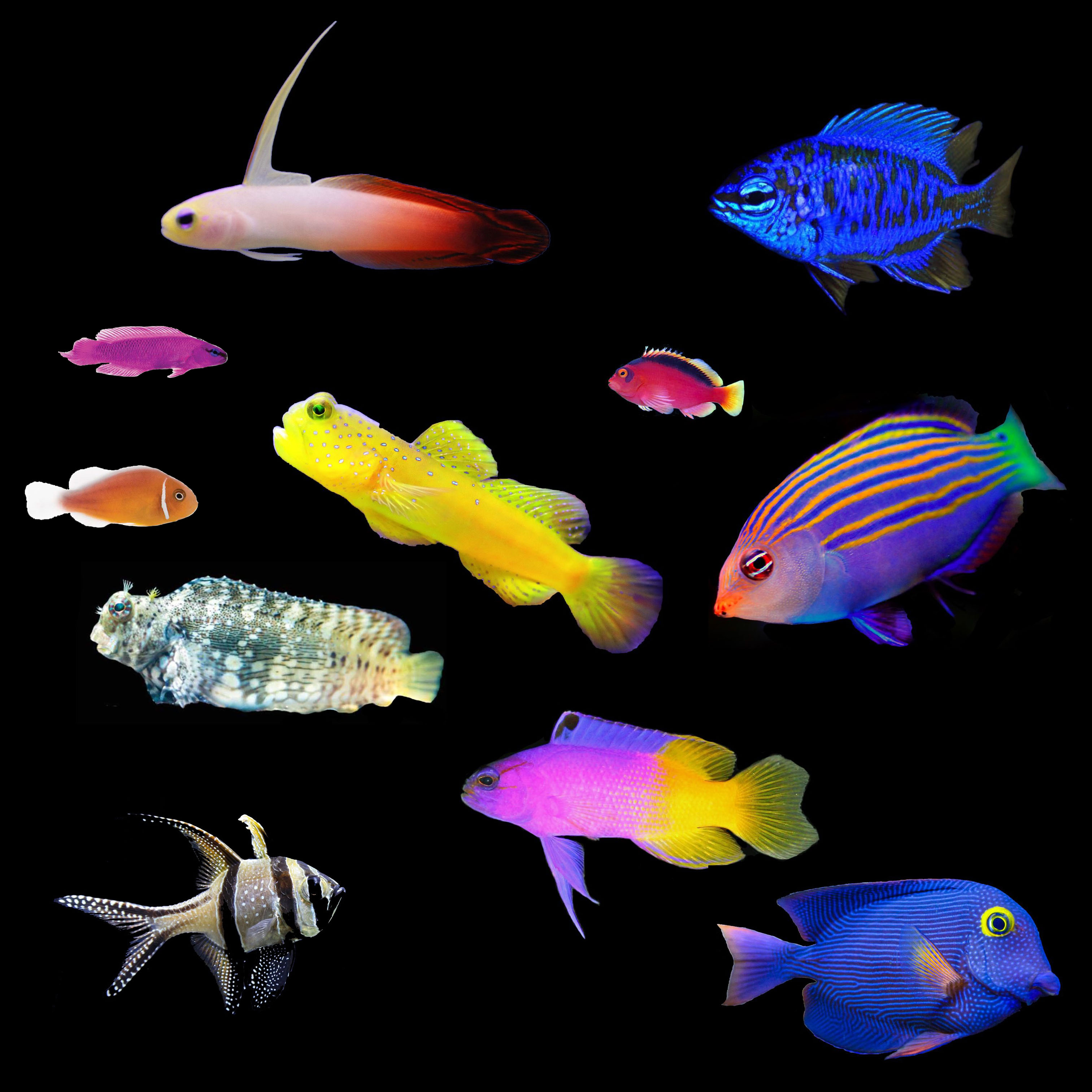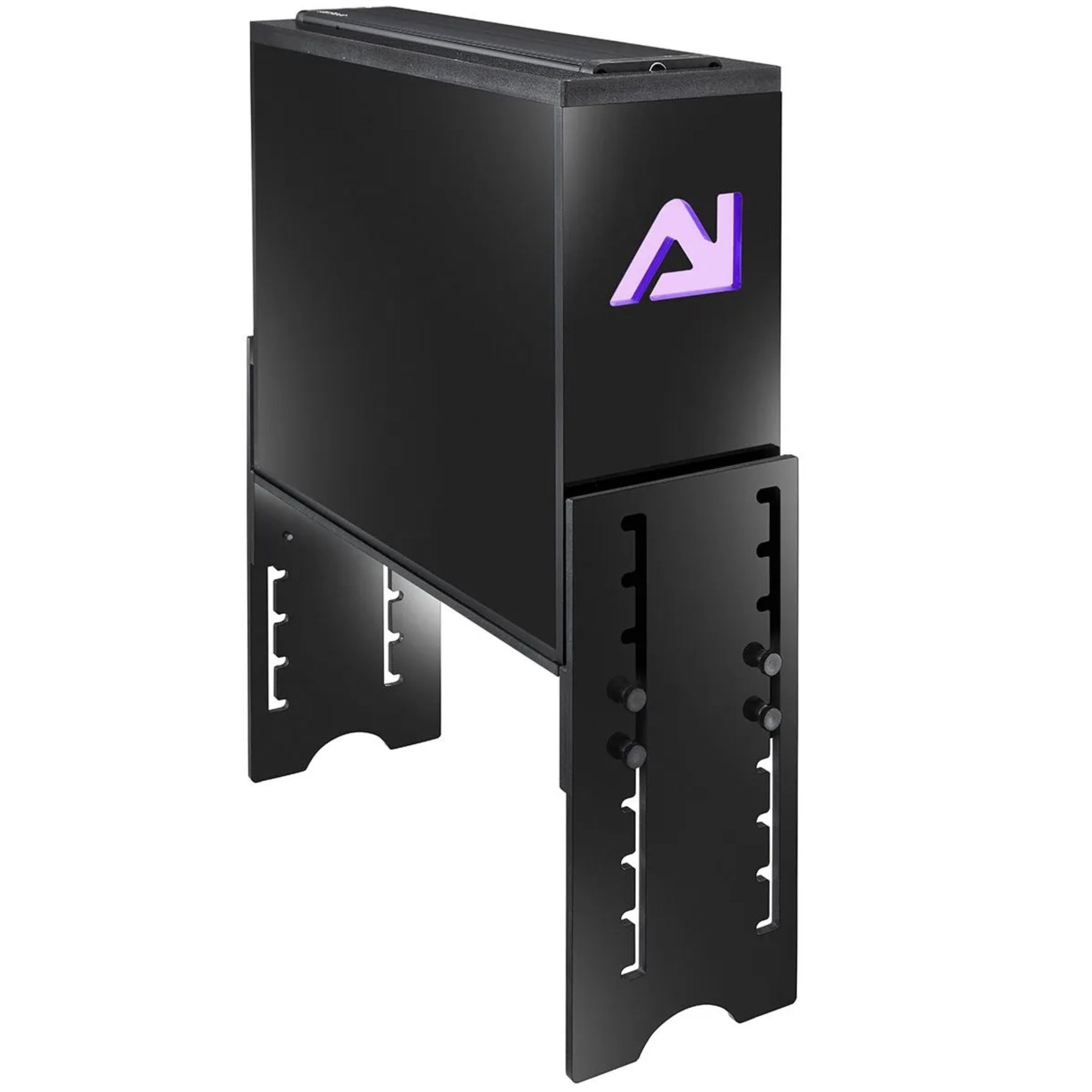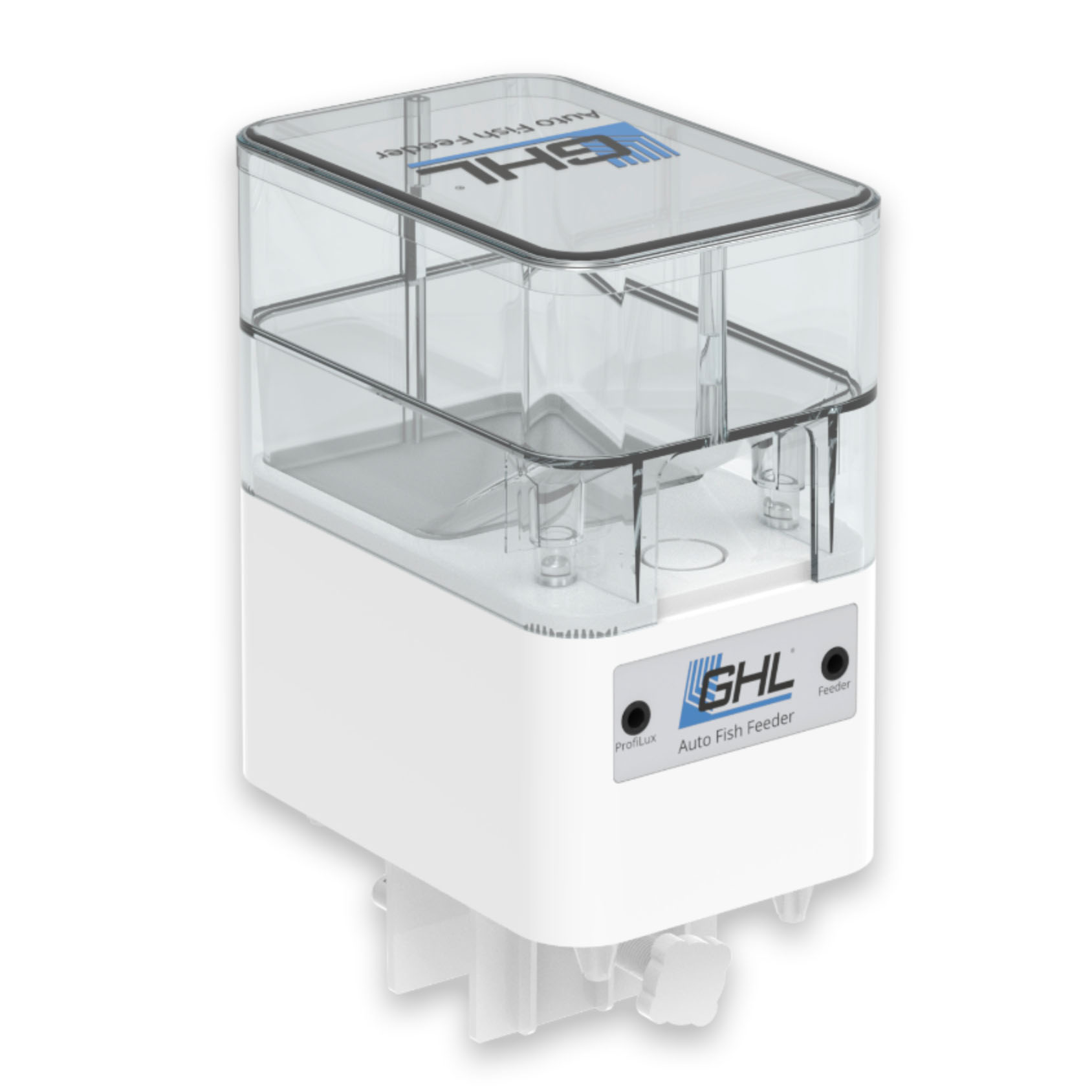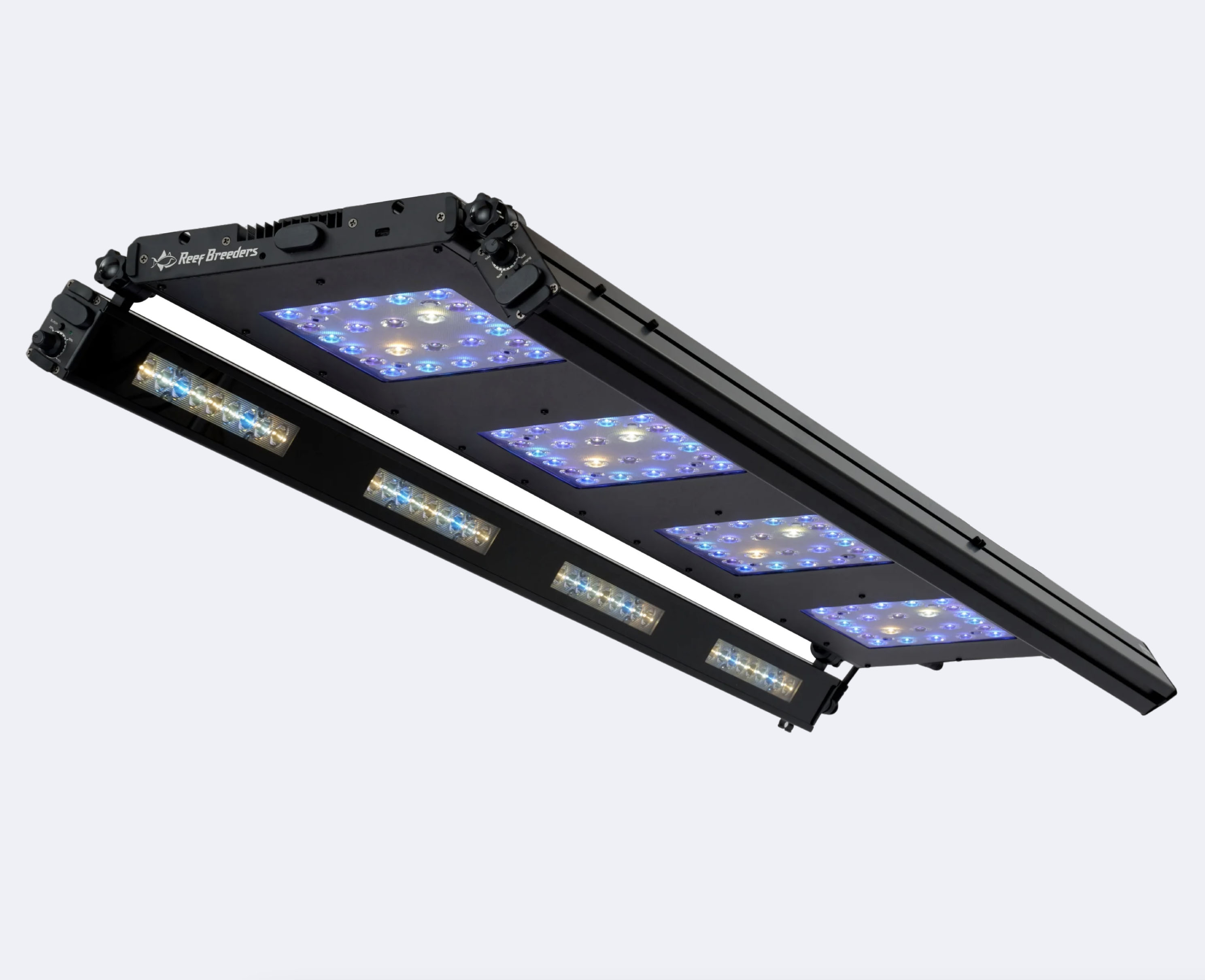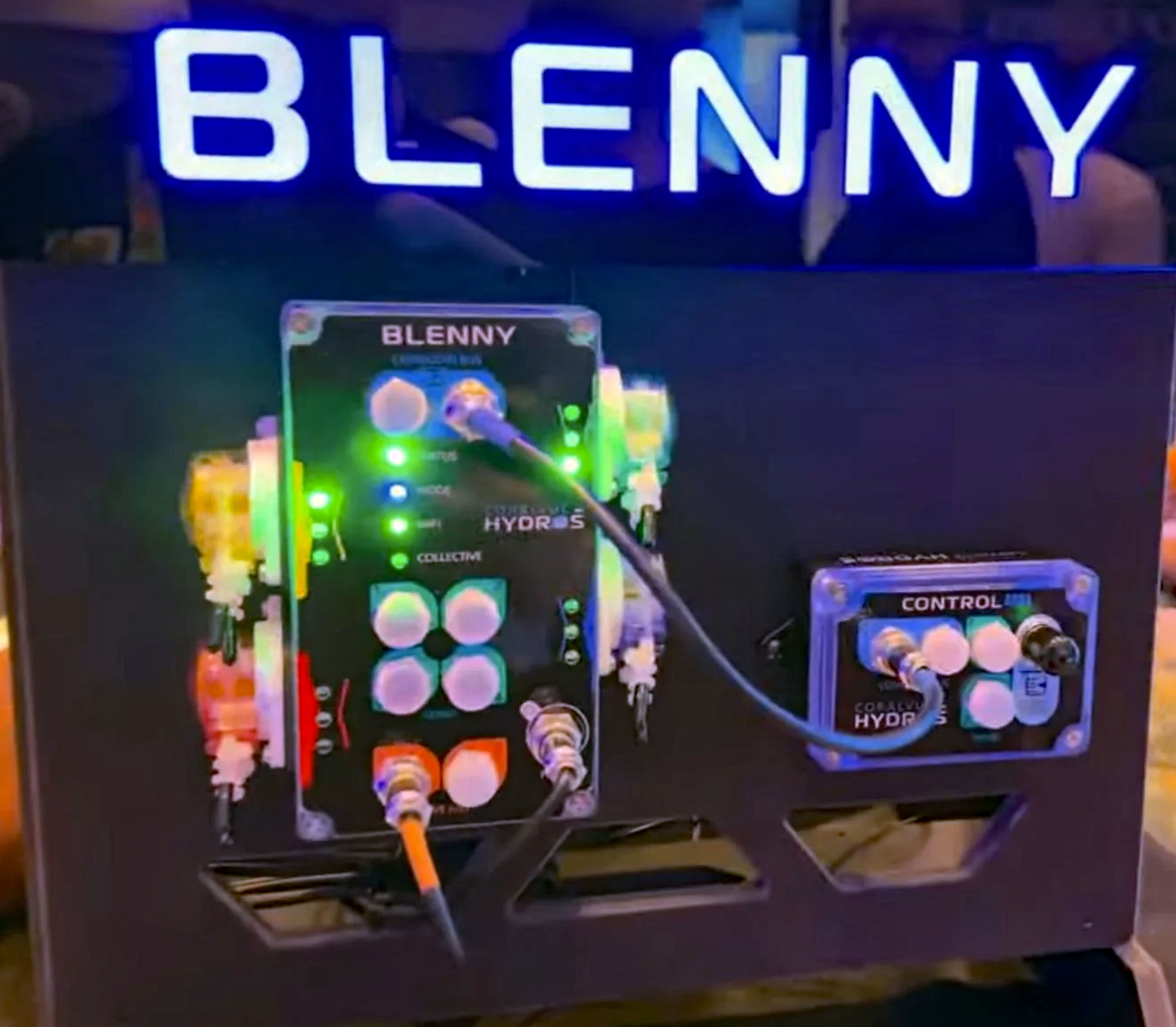We use cookies to make your experience better. To comply with the new e-Privacy directive, we need to ask for your consent to set the cookies. Learn more.
Understanding Protein Skimmers for Saltwater Aquariums
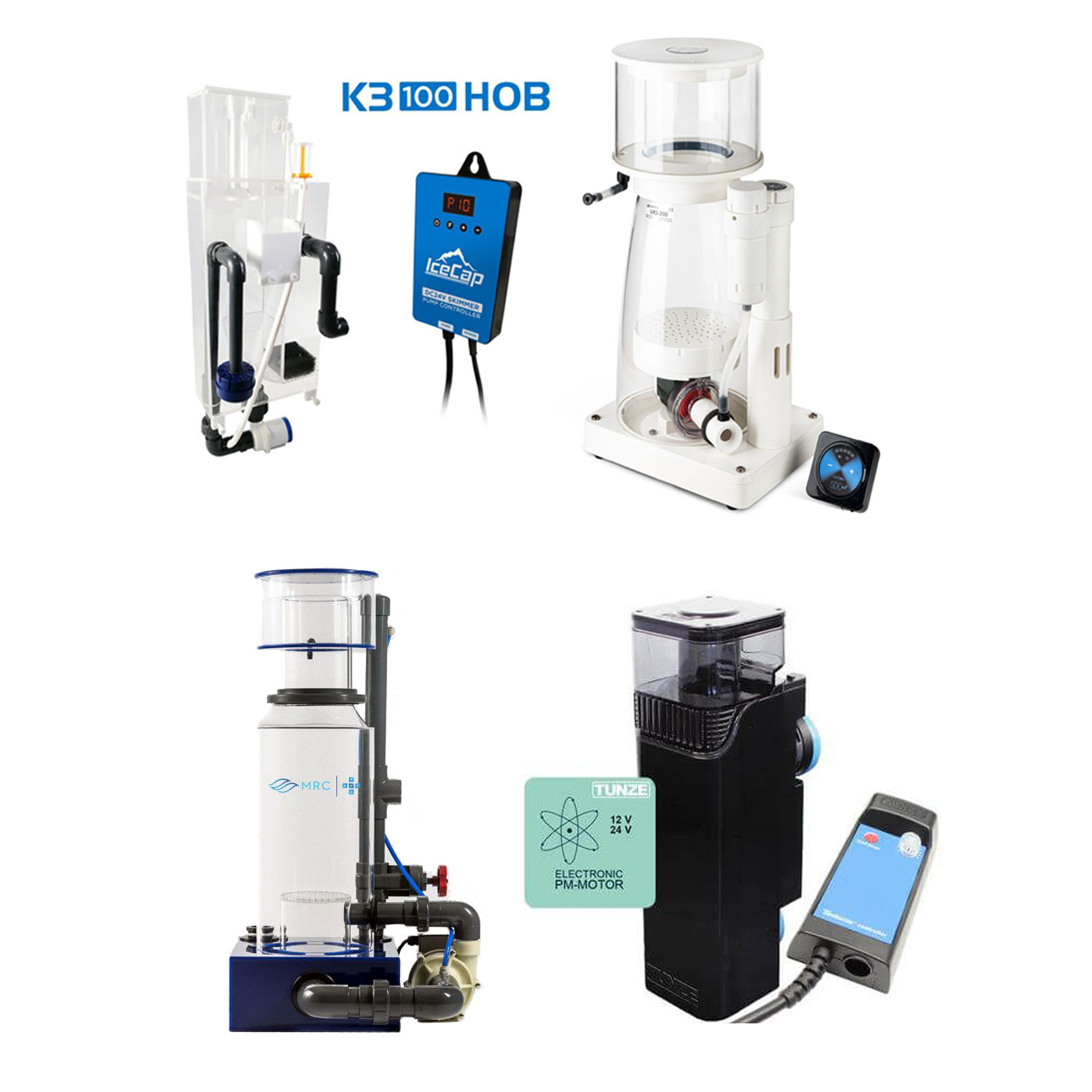
We are featuring a series of articles for beginner aquarists within our learning center and the focus of these articles is to help aquarium hobbyists who are entering into the hobby for the 1st time; or for those setting up a saltwater aquarium for the 1st time. This article explores what protein skimmers do, the different types available, the advantages and disadvantages of each, how and when to clean your skimmer, and why skimmers are generally preferred over canister filters for saltwater aquariums.
Maintaining a healthy saltwater aquarium requires various pieces of equipment, with protein skimmers being one of the more critical components. Protein skimmers, also known as foam fractionators, play a vital role in keeping aquarium water clean and clear by removing organic waste before it decomposes into harmful substances. This article explores what protein skimmers do, the different types available, and the advantages and disadvantages of each, helping you make an informed decision for your marine aquarium setup.
What Does a Protein Skimmer Do?
Maintaining a healthy saltwater aquarium requires various equipment, with protein skimmers being one of the more critical components. Protein skimmers, also known as foam fractionators, play a vital role in keeping aquarium water clean and clear by removing organic waste before it decomposes into more harmful substances. This article explores what protein skimmers do, the different types available, the advantages and disadvantages of each, how and when to clean your skimmer, why skimmers are generally preferred over canister filters for saltwater aquariums, and the role of cohesion and adhesion in the operation of protein skimmers.
Protein skimmers work by creating fine bubbles in a reaction chamber. As the bubbles rise, they attract and bind organic compounds, such as proteins and other waste materials. This process forms a foam that collects in a collection cup, which can be easily removed and discarded. The result is cleaner, clearer water that promotes a healthier environment for marine life. Key benefits of using a protein skimmer include:
- Removing Dissolved Organic Compounds (DOCs): Prevents the buildup of harmful substances like ammonia, nitrite, and nitrate.
- Reducing Algae Growth: By removing nutrients that algae feed on.
- Increasing Oxygen Levels: Improves gas exchange, benefiting fish and coral health.
- Enhancing Water Clarity: Provides a more visually appealing aquarium.
The Role of Cohesion and Adhesion in Protein Skimmers
Cohesion and adhesion are two physical properties of water that play a vital role in the operation of protein skimmers.
Cohesion
Cohesion refers to the attraction between molecules of the same substance. In the context of protein skimmers, it describes the force that holds water molecules together. If you have ever filled a glass of water to the top of the glass and slighty beyond edge of the glass then you have noticed that the water at the top has a slightly dome shape to it. This is referred to as cohesion, which means water molecules have cohesive (attractive) properties between their bonds.
Role in Protein Skimmers:
- Bubble Formation: Cohesion is crucial in the formation of bubbles within the skimmer. It allows water to form a cohesive barrier around the air bubbles, stabilizing them as they rise through the reaction chamber.
- Foam Stability: The cohesive forces in saltwater help maintain the integrity of the foam bubbles as it forms and rises to the collection cup, ensuring that organic waste is effectively separated from the water and transported to the collection cup area and out of the aquarium.
Adhesion
Definition: Adhesion refers to the attraction between molecules of different substances. In protein skimmers, it describes the interaction between water molecules and the surfaces of the skimmer components.
Role in Protein Skimmers:
- Organic Waste Binding: Adhesion plays a key role in how organic waste adheres to the bubbles. The waste particles are attracted to the surface of the bubbles, allowing them to be carried to the top of the skimmer and collected as foam.
- Efficient Skimming: The adhesive forces between the water, air bubbles, and organic waste ensure that the waste is effectively removed from the water column, leading to cleaner aquarium water.
Types of Protein Skimmers
Protein skimmers come in various types, each designed to fit different aquarium setups and needs. Here, we discuss the three main types: internal skimmers, hang on the back (HOB) skimmers, and in-sump skimmers.
Internal AIO Protein Skimmers
Description: Internal all-in-one (AIO) protein skimmers are placed directly inside the aquarium or all-in-one filtration compartment. They are typically compact and easy to install, making them suitable for small to medium-sized tanks and some of the more common brands include the Tunze 9001, 9004 and 9012 series skimmers found on this page or the IceCap AIO 240.
Advantages:
- Space-Saving: Ideal for aquariums with limited external space including AIO style aquariums.
- Ease of Installation: Simple setup without the need for additional plumbing.
- Affordable: Generally less expensive than other types of skimmers.
Disadvantages:
- Aesthetic Impact: Can be visually intrusive within the display tank or AIO filter compartment.
- Maintenance: Requires regular cleaning and maintenance within the aquarium.
External Hang On Back (HOB) Protein Skimmers
Description: HOB protein skimmers are mounted on the back of the aquarium. They draw water from the tank, process it, and return the cleaned water back into the aquarium.
Advantages:
- No In-Tank Footprint: Keeps the main display area free from equipment.
- Easy Access: Convenient for maintenance and adjustments.
- Suitable for Smaller Tanks: Great for nano and small aquariums.
Disadvantages:
- Limited Capacity: May not be suitable for larger, heavily stocked tanks.
- Potential for Leaks: Improper installation can lead to leaks.
- Visual Clutter: Equipment visible from the outside of the tank.
In-Sump Protein Skimmers
Description: In-sump protein skimmers are installed within a sump, a separate tank usually located below the main aquarium. These skimmers are highly efficient and suitable for smaller and larger tanks alike. In-sump skimmers probably make up at least 85% of the overall skimmer market and as such, they are the preferred option for most aquarists.
Advantages:
- High Efficiency: Can handle large volumes of water and high bioloads.
- Hidden Equipment: Keeps the main display tank free from visible equipment.
- Customization: Compatible with various sump configurations, brands and setups.
Disadvantages:
-
- Space Requirements: Requires a sump, which may not be feasible for all aquariums.
- Higher Cost: Generally more expensive than AIO internal skimmers or HOB skimmers.
Cleaning and Maintenance of Protein Skimmers
Regular cleaning and maintenance of your protein skimmer are crucial to ensure it operates efficiently and effectively. Here’s a guide on how and when to clean your skimmer:
How to Clean a Protein Skimmer
- Turn Off the Skimmer: Before cleaning, make sure to turn off the skimmer and disconnect it from the power source.
- Remove the Collection Cup: Carefully detach the collection cup where the foam and waste are collected.
- Clean the Collection Cup: Rinse the collection cup with warm water and scrub it with a soft brush (we typically use a soft bristle toothbrush to remove any buildup. Avoid using soap or detergents, as they can harm your aquarium inhabitants!!! If you are using tap water vs. RO or RODI water to clean your skimmer then you may want to use a little chlorine and ammonia nutralizer like Seachem Prime before placing the skimmer back into the tank.
- Inspect the Skimmer Body: Check the skimmer body for any buildup or obstructions. If needed, disassemble the skimmer to clean the internal parts.
- Clean the Air Intake and Venturi Valve: These components can become clogged with salt and debris, reducing skimmer performance. Use a small brush or pipe cleaner to clear any blockages.
- Reassemble the Skimmer: Once all parts are clean and dry, reassemble the skimmer and ensure all connections are secure.
- Restart the Skimmer: Plug in the skimmer and turn it back on, making sure it’s operating correctly.
When to Clean a Protein Skimmer
- Weekly Maintenance: Clean the collection cup and check for any buildup or obstructions in the skimmer body.
- Monthly Deep Cleaning: Perform a thorough cleaning of the entire skimmer, including the air intake and venturi valve.
- As Needed: If you notice a decrease in skimmer performance or an increase in waste buildup, clean the skimmer more frequently.
Why Protein Skimmers are Better Than Canister Filters for Saltwater Aquariums
Sometimes we get the question, why can't I just use my canister filter that I had on my freshwater sertup? Protein skimmers and canister filters both serve the purpose of cleaning aquarium water, but they do so in different ways and are suited to different types of aquariums. Dispite this, some people still choose to use a canister filter, but often less successfully than they would if they had chose a skimmer over a canister filter.
Protein Skimmers
Advantages for Saltwater Aquariums:
- Efficient Organic Waste Removal: Protein skimmers are specifically designed to remove organic waste before it breaks down, which is crucial in maintaining water quality in saltwater aquariums.
- Preventing Algae Growth: By removing organic compounds that fuel algae growth, skimmers help in controlling algae populations.
- Maintaining Stable Water Chemistry: Skimmers aid in maintaining stable water chemistry, which is vital for the delicate balance in saltwater environments.
Disadvantages:
- Cost: The upfront cost of Protein skimmers are typically more expensive than canister filters.
- Complexity: They require a little more knowledge and regular maintenance to operate efficiently.
Canister Filters
Advantages for Freshwater Aquariums:
- Versatility: Canister filters can hold various types of filter media, making them versatile for different filtration needs.
- Ease of Use: Generally easier to set up and maintain compared to skimmers.
- Functionality: Canister filters can be used in freshwater or saltwater aquariums.
Disadvantages for Saltwater Aquariums:
- Less Effective Organic Waste Removal: Canister filters are not as effective at removing dissolved organic compounds before they decompose, which is crucial in saltwater systems.
- Maintenance Requirements: Canister filters need frequent cleaning to prevent buildup of nitrates, which can be detrimental in saltwater aquariums.
Why We Recommend Protein Skimmers for Saltwater Aquariums and Canister Filters for Freshwater Aquariums
- Saltwater Aquariums: Protein skimmers excel at removing organic waste and maintaining water quality in saltwater environments, where stable water chemistry is essential for the health of marine life.
- Freshwater Aquariums: Canister filters are versatile and effective for mechanical, chemical, and biological filtration in freshwater setups, where the demand for dissolved organic compound removal is lower compared to saltwater systems.
In conclusion, a protein skimmer is an essential tool for maintaining a healthy saltwater aquarium. By understanding the different types of skimmers—internal, external, HOB, and in-sump—you can choose the best option for your setup. Each type has its advantages and disadvantages, but all work towards the common goal of providing cleaner, clearer water for your marine inhabitants. Regular cleaning and maintenance of your protein skimmer will ensure it continues to operate effectively, keeping your aquarium in top condition. While protein skimmers are ideal for saltwater aquariums due to their efficiency in removing organic waste, canister filters are more suited for freshwater setups. Remember to consider your tank size, bioload, and available space when making your decision to purchase the right skimmer for your aquarium. And if you need further help and advice to narrow down your skimmer choices then reach out to our support staff at Aquarium Specialty.




